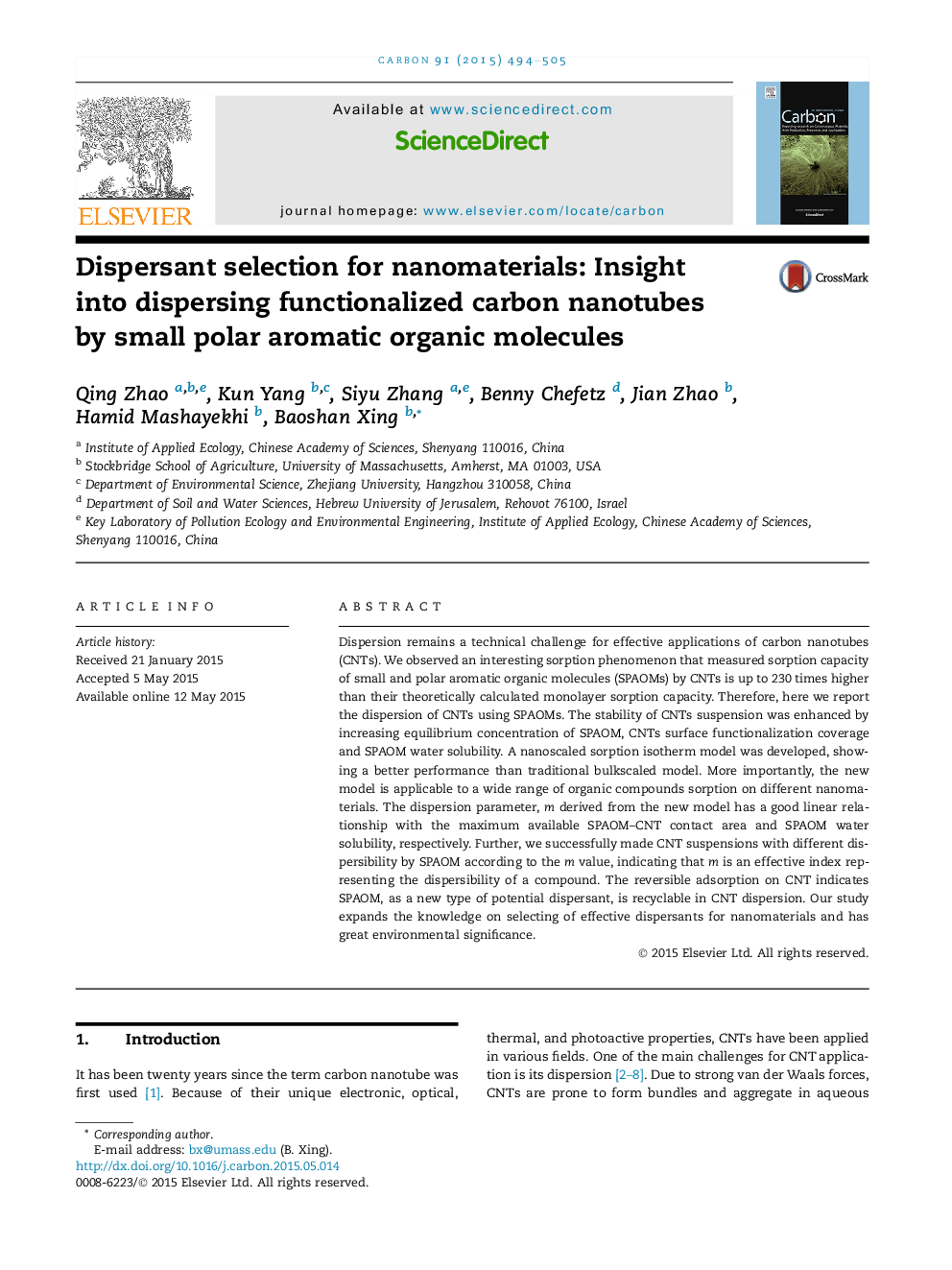| Article ID | Journal | Published Year | Pages | File Type |
|---|---|---|---|---|
| 7851799 | Carbon | 2015 | 12 Pages |
Abstract
Dispersion remains a technical challenge for effective applications of carbon nanotubes (CNTs). We observed an interesting sorption phenomenon that measured sorption capacity of small and polar aromatic organic molecules (SPAOMs) by CNTs is up to 230 times higher than their theoretically calculated monolayer sorption capacity. Therefore, here we report the dispersion of CNTs using SPAOMs. The stability of CNTs suspension was enhanced by increasing equilibrium concentration of SPAOM, CNTs surface functionalization coverage and SPAOM water solubility. A nanoscaled sorption isotherm model was developed, showing a better performance than traditional bulkscaled model. More importantly, the new model is applicable to a wide range of organic compounds sorption on different nanomaterials. The dispersion parameter, m derived from the new model has a good linear relationship with the maximum available SPAOM-CNT contact area and SPAOM water solubility, respectively. Further, we successfully made CNT suspensions with different dispersibility by SPAOM according to the m value, indicating that m is an effective index representing the dispersibility of a compound. The reversible adsorption on CNT indicates SPAOM, as a new type of potential dispersant, is recyclable in CNT dispersion. Our study expands the knowledge on selecting of effective dispersants for nanomaterials and has great environmental significance.
Related Topics
Physical Sciences and Engineering
Energy
Energy (General)
Authors
Qing Zhao, Kun Yang, Siyu Zhang, Benny Chefetz, Jian Zhao, Hamid Mashayekhi, Baoshan Xing,
